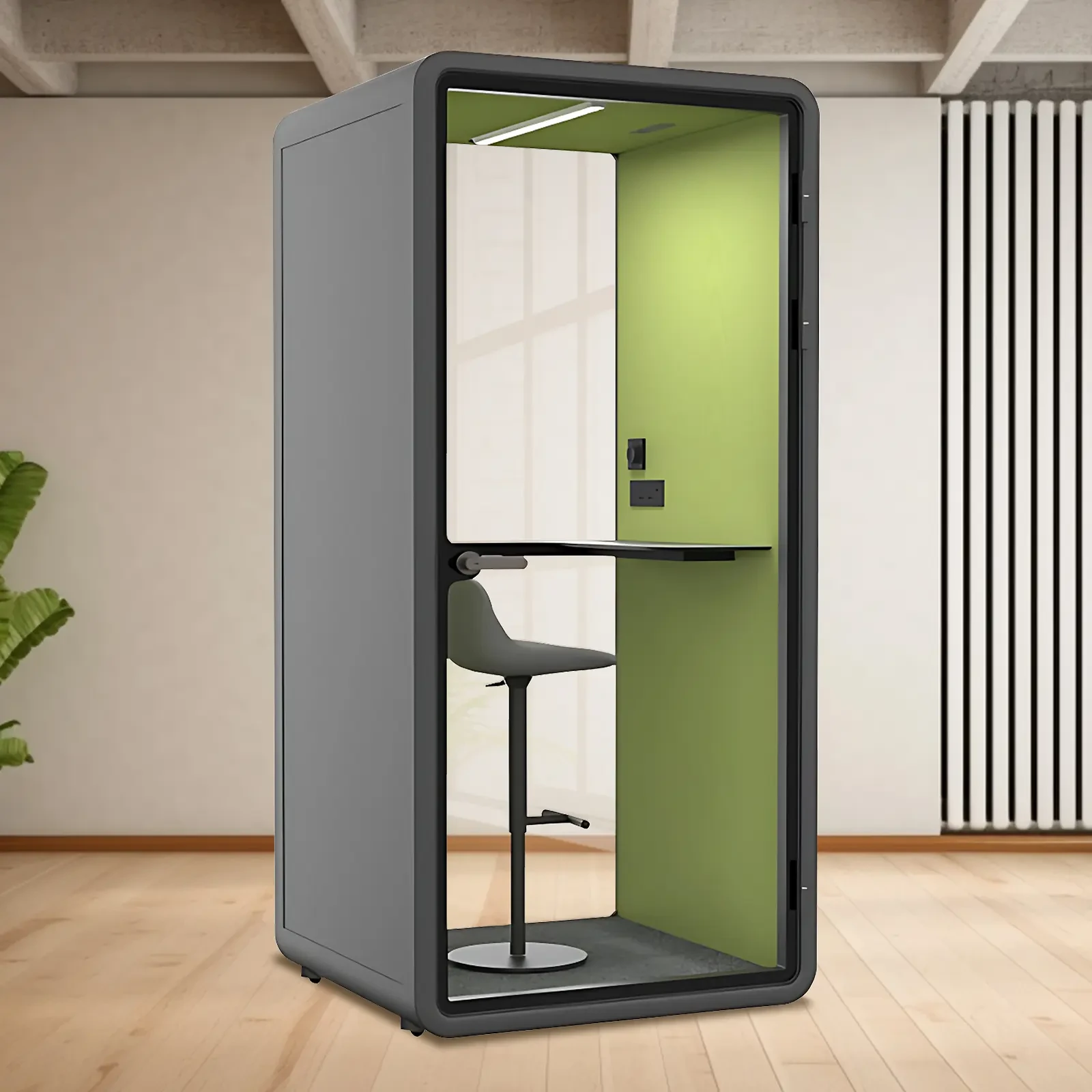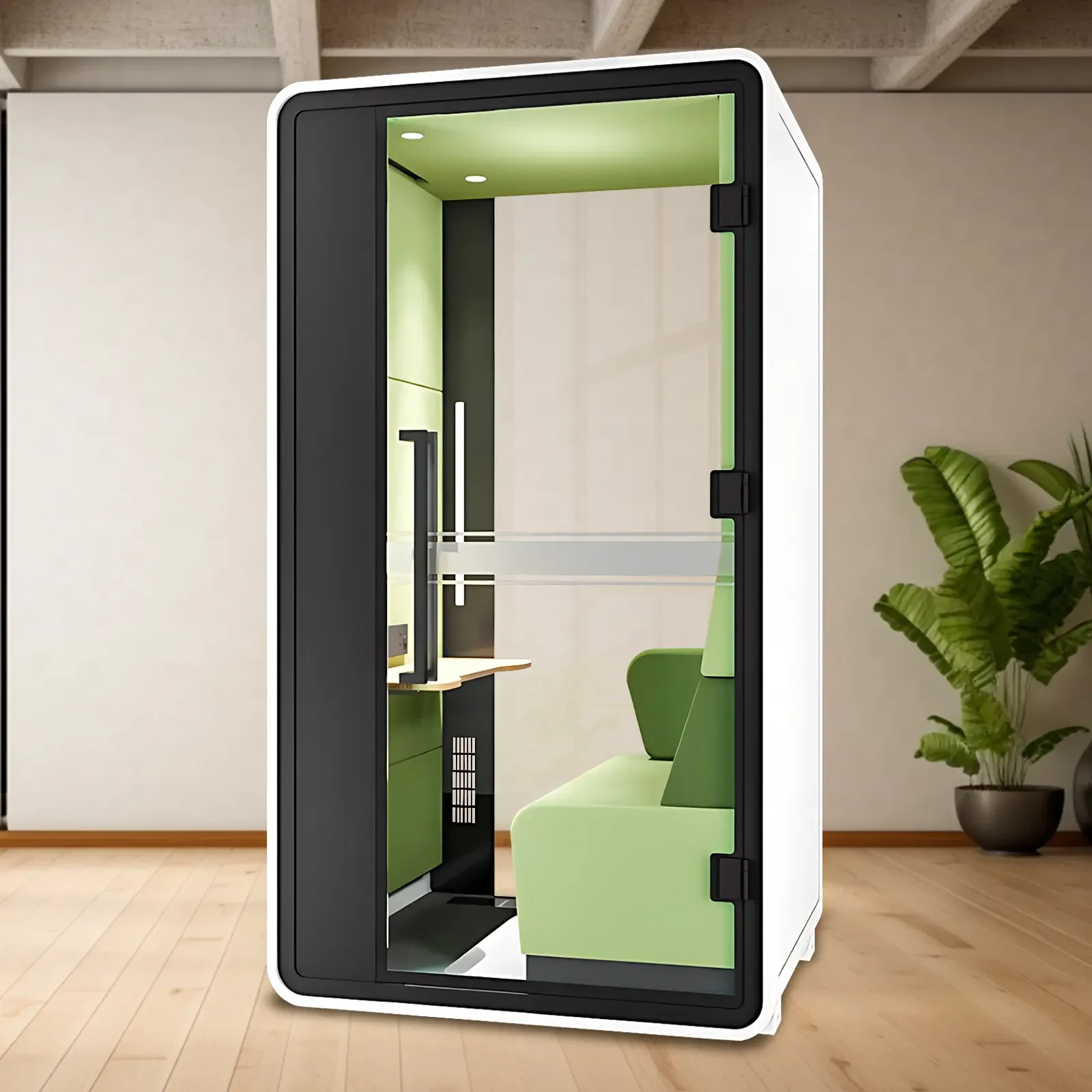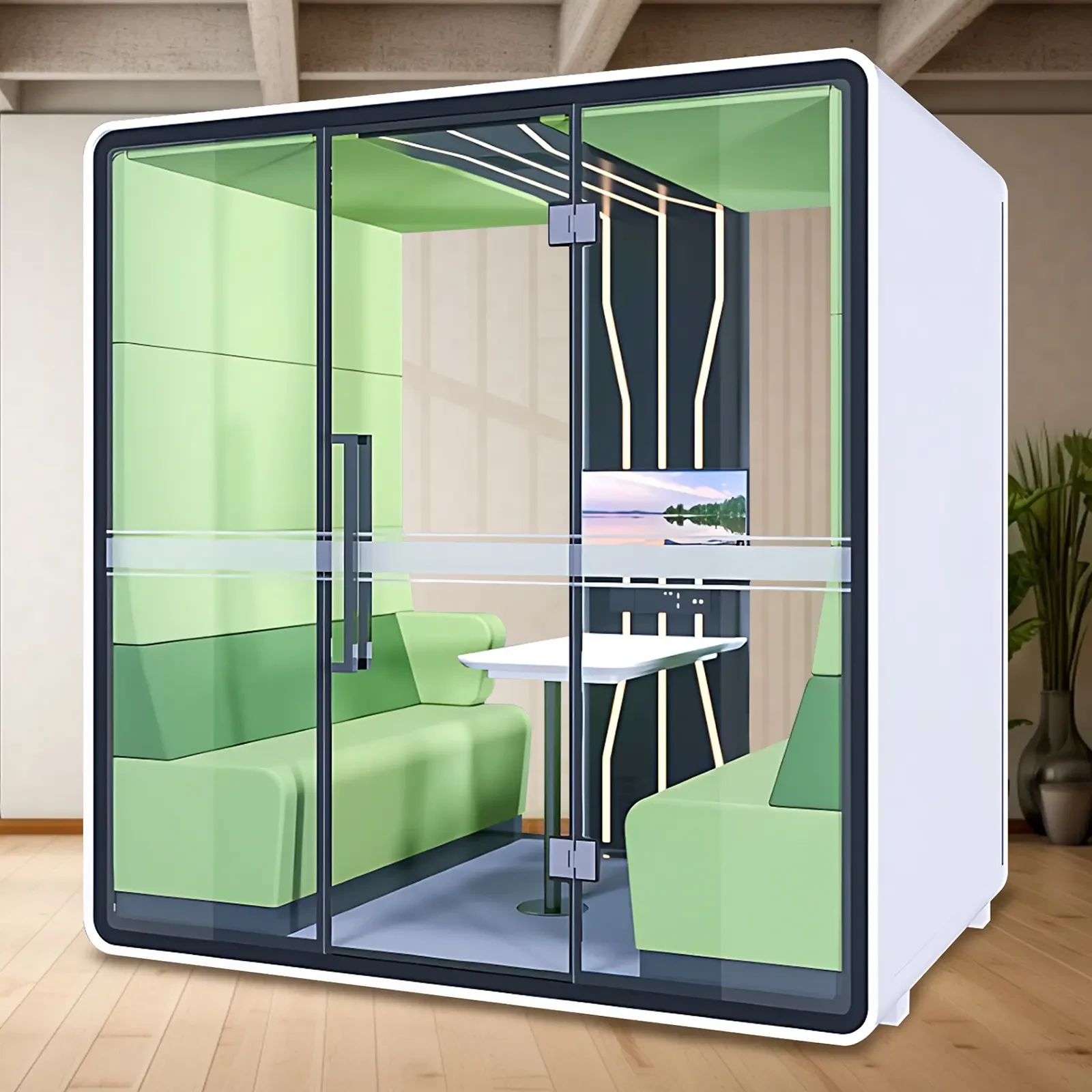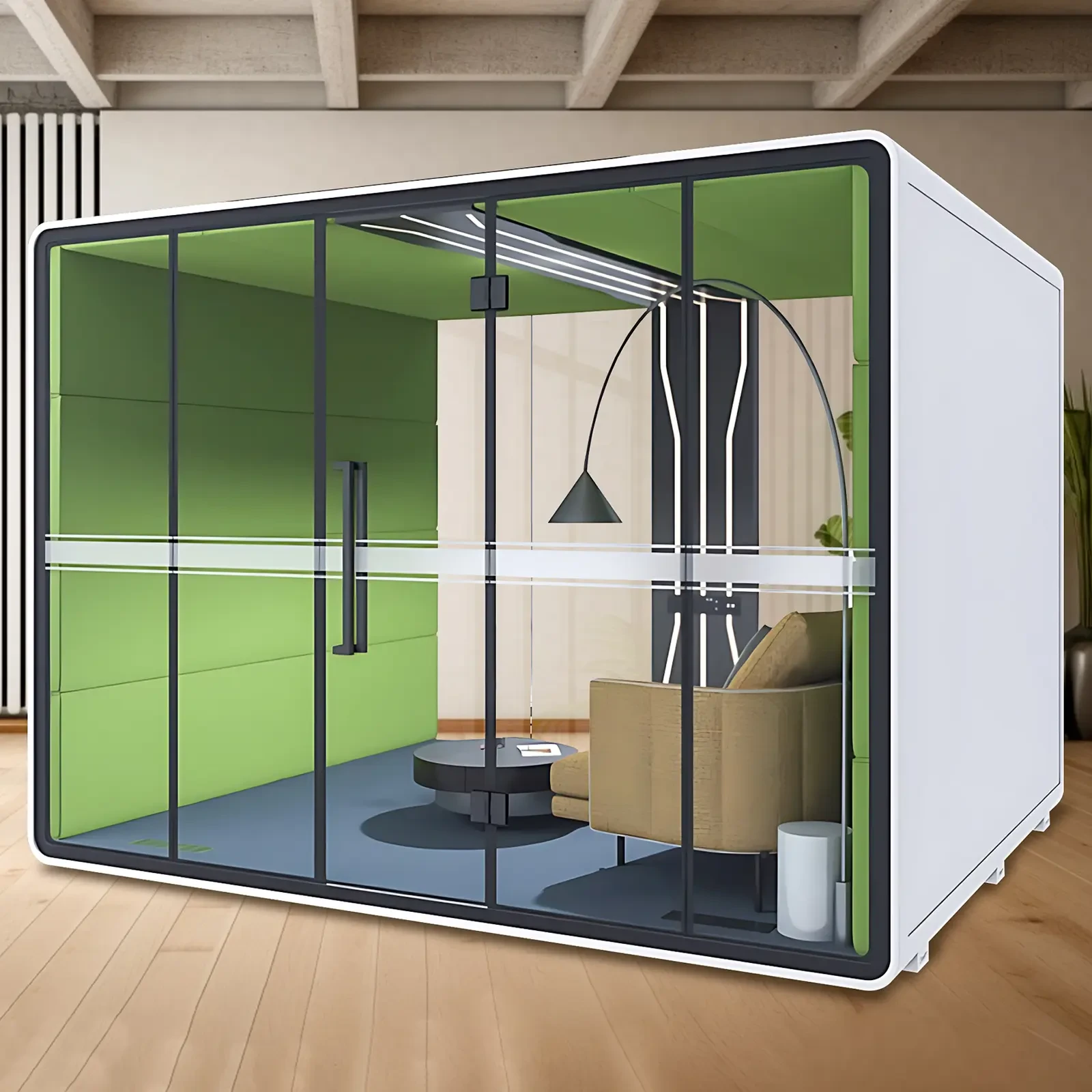A Comprehensive Analysis of the Quiet Cabin Interior Design
As a "quiet oasis" for modern urbanites, the Quiet Cabin's interior design integrates cutting-edge technology and ergonomic principles to create an ultimate comfort experience. The following are the core elements of the Quiet Cabin's user-friendly design:
Intelligent Environmental Control System
Modern Quiet Cabins are equipped with a highly intelligent environmental control system:
AI Environmental Sensing: Using millimeter-wave radar and biometric sensors to monitor the user's status in real time, it automatically adjusts the temperature (adjustable from 18-26°C), humidity (40-60% RH), and air quality (PM2.5 <35μg/m³).
Adaptive Lighting: Continuously adjustable color temperature between 2700K and 6500K, with brightness adjustable from 10% to 100%, automatically matching the optimal lighting based on the user's activity type.
Sound Field Optimization: A built-in white noise generator provides 12 natural sound effects and noise reduction depth of up to 35dB.
Ergonomic and Comfortable Design
The Quiet Cabin Interior is filled with Considering comfort for extended use:
Fully adjustable seat: supports height (±8cm), backrest angle (90°-135°), seat depth (±5cm), and armrest height (±6cm), with 92% pressure distribution uniformity.
Human-conforming support system: Lumbar support area ≥ 300cm², height-adjustable neck support, and seat cushions made of high-resilience memory foam (density 55kg/m³).
Barrier-free design: Door width ≥ 75cm, internal turning area ≥ 120cm, meeting the needs of wheelchair users.
Multimodal interactive experience
Interactive design integrates multiple sensory channels:
Voice control: Supports natural language command recognition, with a response time of <0.5 seconds and 98.7% accuracy.
Haptic feedback: The control panel uses force tactile technology to provide clear operational feedback (with adjustable vibration intensity in three levels).
Gesture Recognition: Supports eight basic gestures, with a recognition range of 0.5-1.2 meters and 95% accuracy.
Biometrics: Integrated heart rate (±2 bpm accuracy) and respiratory rate (±0.5 bpm accuracy) monitoring, automatically alerting users of abnormal conditions.
Health Care System
The quiet cabin integrates multiple health management features:
Air Quality Assurance: Fresh air exchange volume ≥ 30 m³/h, CO₂ concentration maintained at < 1000 ppm, equipped with HEPA 13-level filtration (99.97% filtration efficiency).
Fatigue Relief: Automatic micro-break prompts every 30 minutes, and a built-in 16-point massage system with five selectable modes.
Emotional Adjustment: A The I emotion recognition algorithm analyzes emotional states using micro-expressions and voice features, automatically recommending stress-relief solutions (including seven guided meditation programs).
Modular Space Configuration
The Silent Cabin supports personalized feature combinations:
Work Mode: A height-adjustable work surface (adjustable from 60-120 cm) supports dual 4K monitors.
Relax Mode: The seat reclines flat with a single button to create a 160° reclining resting bed, with storage for eye masks and blankets.
Conference Mode: Supports four people sitting in a circle, integrated with a 360° omnidirectional microphone array and noise suppression algorithm (signal-to-noise ratio ≥ 70dB).
These design details contribute to the user-friendly experience of the Silent Cabin, making it not only a soundproof space but also a smart micro-environment that integrates work, rest, and health management. Data shows that Silent Cabins using these features have a user satisfaction rate of 94.3%, with average single-session duration extended to 2.7 hours and work efficiency increased by 40%. With the continuous advancement of technology, the user-friendly design of the Silent Cabin will continue to evolve, providing urban residents with a more tranquil experience.

 USD
USD
 GBP
GBP
 EUR
EUR






